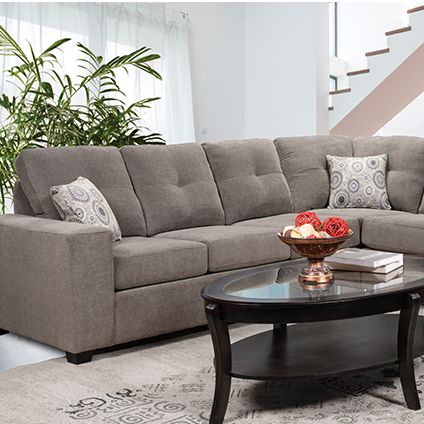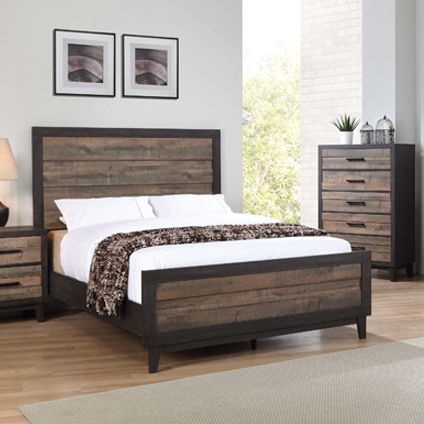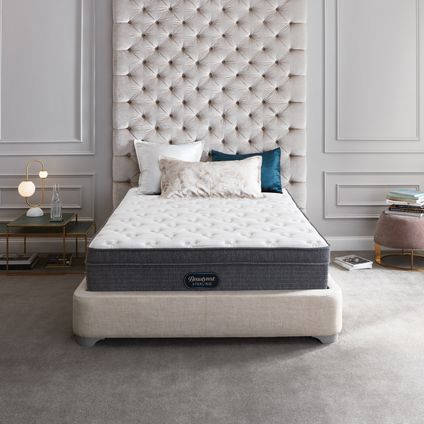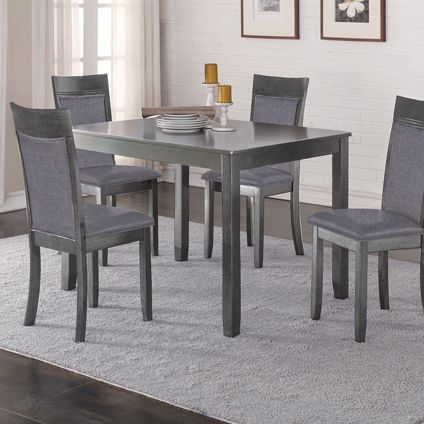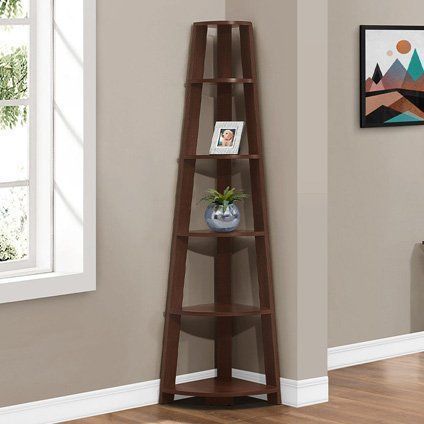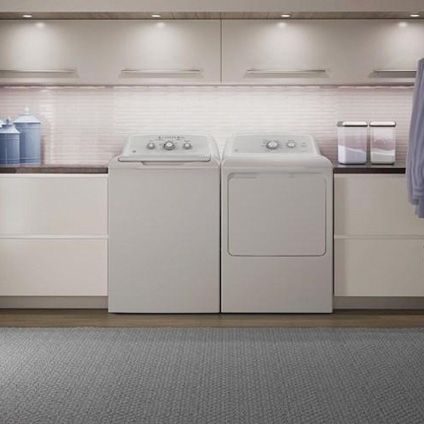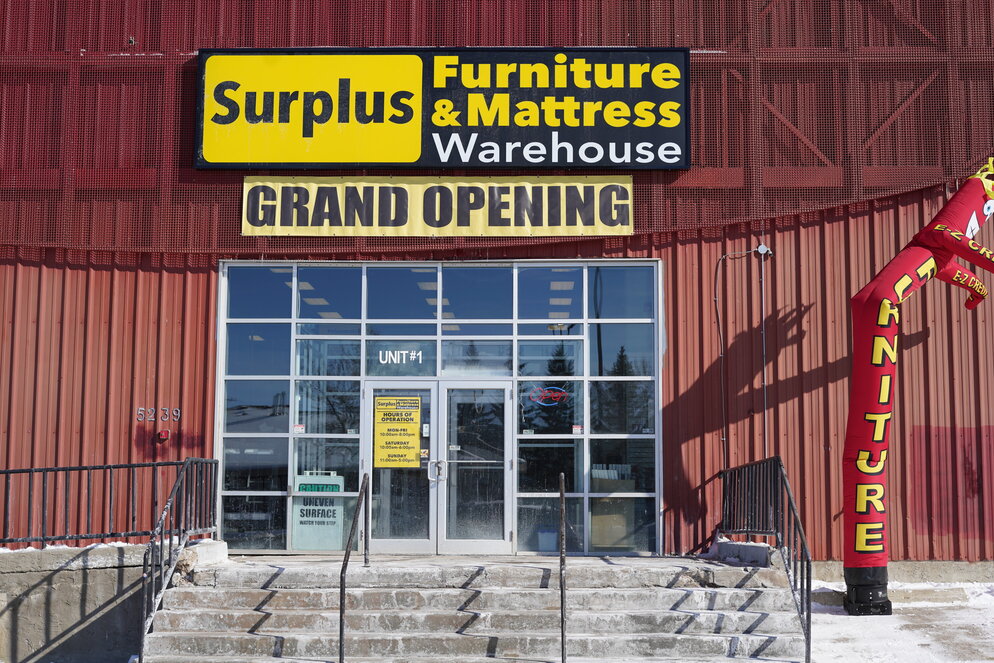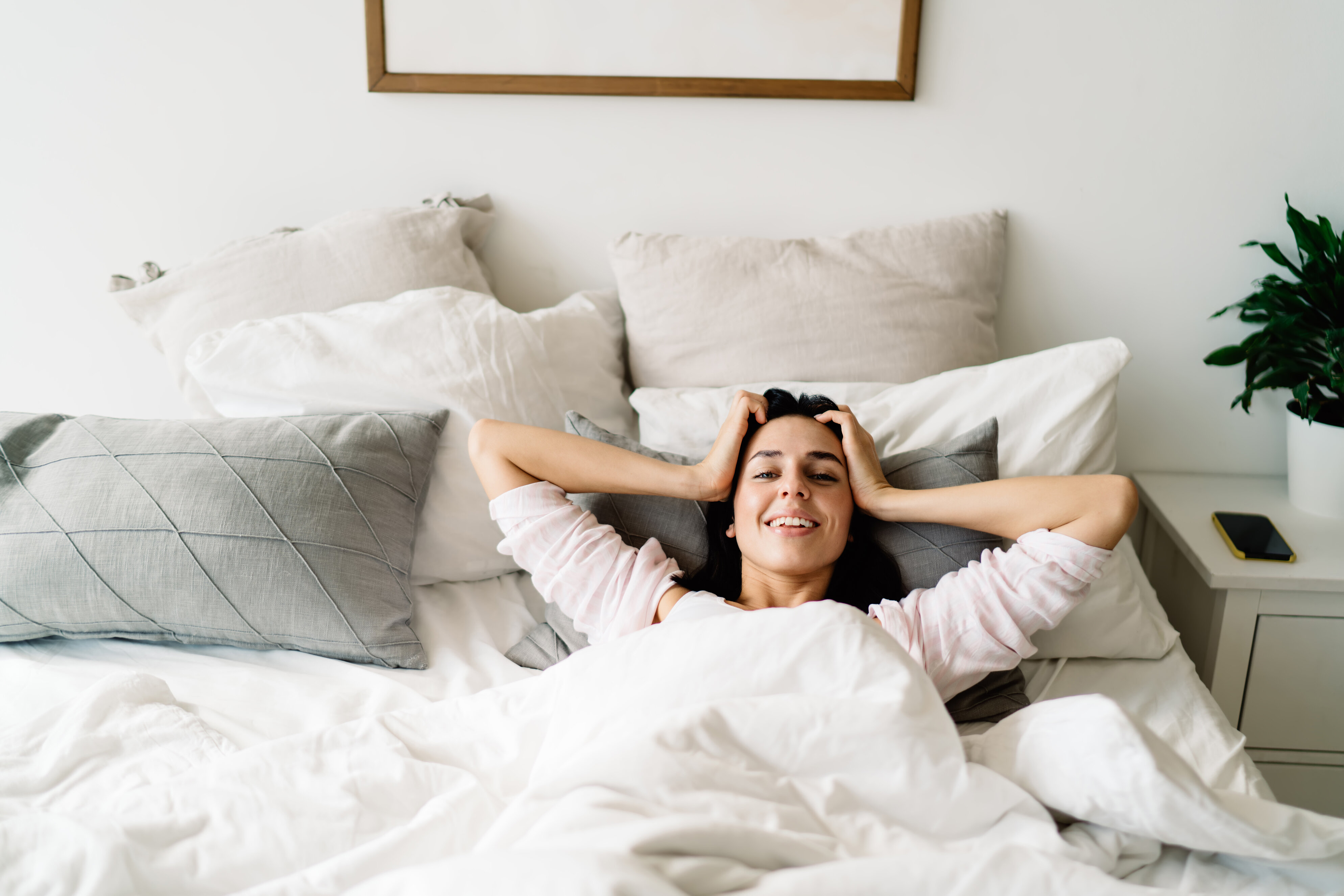iSave Best Price
Free Layaway
Same Day Delivery
Don't Pay for 1yr
The Light Bulb Colour Temperature Guide
Did you know that light intensity can affect a person’s mood? Whether it’s bright or dark, lighting is a powerful thing that can change the way you feel in both positive and negative ways. In fact, it can have such an influential factor that it could affect your psychological well-being. For instance, we all know that the amount of sunlight decreases each day as the fall season progresses and it becomes increasingly limited as we get closer to the winter. This is due to the Earth’s rotation, its axis and its proximity to the sun – as we get further away from the sun, we experience less daylight and that could cause some people to get those winter blues.
In fact, some individuals begin to show signs of depression when the days become shorter and it may be due to Seasonal Affective Disorder. This psychological disorder, referred to as SAD, has a direct correlation to the amount of daylight one receives because we tend to feel more optimistic and happy when there’s plenty of sunshine and when there’s less light, we aren’t as joyful. Research from the American Academy of Family Physicians cites that 4% to 6% of people may have winter depression and another 10% to 20% of individuals may have mild signs of SAD.
With that in mind, lighting can affect us any time of the year, but the place where you can control the type of lighting you are exposed to year-round is in your home! Lighting can change the mood and ambiance of a room and with this light bulb colour temperature guide, you can find the perfect color for each room of your home.
Colour Temperature Range
Light bulbs emit different shades of colour and have a kelvin temperature range that can vary from 2700K to 6500K for indoor use. On the lower end of the kelvin temperature spectrum, the colour will be a soft and warm hue that has a slight yellow tint (2700K). Moving up to a 3500K light bulb and you have a hue that’s neutral and balanced with more of a white appearance. Transitioning beyond 4100K and it’s a cooler colour that’s a white/bluish tint. And when you choose a light bulb anywhere between 5000K+ to 6500K and you’re left with a bright, daylight hue (take a look at the image below for a visual representation).
 Not All Bulbs Are Created Equal
Not All Bulbs Are Created Equal
 Before we dive into which bulb color temperature is ideal for each specific room, you’ll want to understand the differences in some of the common light bulb types that are available. Everyone is probably familiar with one of the oldest light bulb types and that’s the incandescent bulb. This type of bulb began its’ exit in the marketplace during 2012 when the United States decided to raise the minimum energy efficiency standards. This is one of the reasons why you can’t seem to find them anywhere because they are known to suck up so much energy.
With that in mind, we can move on to the other options like the halogen bulb that’s only 10% to 20% more efficient than incandescent. While they tend to be a less expensive option, they still are quite inefficient when it comes to energy usage and you may not be able to find as many colour temperature options as you would with CFL or LED bulbs. Moving on to compact fluorescent bulbs (CFLs) – this type of bulb is 75% more energy efficient than incandescent bulbs. Light emitting diode bulbs (LEDs) are 85% more energy efficient that incandescent bulbs. Both of these bulbs can save a significant amount of energy and that results in lower utility bills, so updating the lighting from room to room can save you money!
Kitchen Lighting
In your kitchen, you will want lighting that’s bright because it’ll provide you with crisp and clear lighting for food prep. Consider switching the light bulbs to a colour temperature of 4100K or higher and keep your eyes peeled for packages that are named bright white or cool white. Additionally, the kitchen is the heart of the home and that lighting temperature will make the atmosphere lively and clean.
Dining Lighting
Before we dive into which bulb color temperature is ideal for each specific room, you’ll want to understand the differences in some of the common light bulb types that are available. Everyone is probably familiar with one of the oldest light bulb types and that’s the incandescent bulb. This type of bulb began its’ exit in the marketplace during 2012 when the United States decided to raise the minimum energy efficiency standards. This is one of the reasons why you can’t seem to find them anywhere because they are known to suck up so much energy.
With that in mind, we can move on to the other options like the halogen bulb that’s only 10% to 20% more efficient than incandescent. While they tend to be a less expensive option, they still are quite inefficient when it comes to energy usage and you may not be able to find as many colour temperature options as you would with CFL or LED bulbs. Moving on to compact fluorescent bulbs (CFLs) – this type of bulb is 75% more energy efficient than incandescent bulbs. Light emitting diode bulbs (LEDs) are 85% more energy efficient that incandescent bulbs. Both of these bulbs can save a significant amount of energy and that results in lower utility bills, so updating the lighting from room to room can save you money!
Kitchen Lighting
In your kitchen, you will want lighting that’s bright because it’ll provide you with crisp and clear lighting for food prep. Consider switching the light bulbs to a colour temperature of 4100K or higher and keep your eyes peeled for packages that are named bright white or cool white. Additionally, the kitchen is the heart of the home and that lighting temperature will make the atmosphere lively and clean.
Dining Lighting
 Moving from the kitchen to the dining room, it’s ideal to tone down the colour temperature with light bulbs that are in the 2700K to 3000k range. This creates an atmosphere that’s more intimate, inviting and relaxing, which is what you want when you sit down to enjoy a meal. The softer tones can light up the food evenly and increase comfort.
Bathroom Lighting
When you’re getting ready for the day, you always want to put your best face forward and light bulbs with a colour temperature of 5000K and above are the best when it comes to clarity and accuracy. This means it’s the ideal hue when applying makeup and ensuring that your clothes match. Bulb packaging with the name daylight or daylight deluxe are commonly used to distinguish this colour choice.
Bedroom Lighting
The mood you want to create in your bedroom should be neutral and cool to set the tone for going to bed and waking up. When looking at colour temperatures, consider the range of 3000K to 4100K because it’ll give you an efficient balance between warmth and crispness.
Living Room Lighting
This is where lighting can get very interesting because you’ll want to incorporate multiple light fixtures to capture the best kind of atmosphere for conversation and relaxation. Head to one of Surplus Furniture Warehouse’s locations and pick up table lamps and floor lamps to get started. By using both eye-level table lamps for reading and conversation and floor lamps to provide an inviting contrast, use bulbs with a temperature of 2700K to 3500K for that comfortable and welcoming feeling.
Now that you know the optimal light bulb colour temperature for each room of your home, are you ready to make the switch and light up your emotions?
Moving from the kitchen to the dining room, it’s ideal to tone down the colour temperature with light bulbs that are in the 2700K to 3000k range. This creates an atmosphere that’s more intimate, inviting and relaxing, which is what you want when you sit down to enjoy a meal. The softer tones can light up the food evenly and increase comfort.
Bathroom Lighting
When you’re getting ready for the day, you always want to put your best face forward and light bulbs with a colour temperature of 5000K and above are the best when it comes to clarity and accuracy. This means it’s the ideal hue when applying makeup and ensuring that your clothes match. Bulb packaging with the name daylight or daylight deluxe are commonly used to distinguish this colour choice.
Bedroom Lighting
The mood you want to create in your bedroom should be neutral and cool to set the tone for going to bed and waking up. When looking at colour temperatures, consider the range of 3000K to 4100K because it’ll give you an efficient balance between warmth and crispness.
Living Room Lighting
This is where lighting can get very interesting because you’ll want to incorporate multiple light fixtures to capture the best kind of atmosphere for conversation and relaxation. Head to one of Surplus Furniture Warehouse’s locations and pick up table lamps and floor lamps to get started. By using both eye-level table lamps for reading and conversation and floor lamps to provide an inviting contrast, use bulbs with a temperature of 2700K to 3500K for that comfortable and welcoming feeling.
Now that you know the optimal light bulb colour temperature for each room of your home, are you ready to make the switch and light up your emotions?
 Not All Bulbs Are Created Equal
Not All Bulbs Are Created Equal
 Before we dive into which bulb color temperature is ideal for each specific room, you’ll want to understand the differences in some of the common light bulb types that are available. Everyone is probably familiar with one of the oldest light bulb types and that’s the incandescent bulb. This type of bulb began its’ exit in the marketplace during 2012 when the United States decided to raise the minimum energy efficiency standards. This is one of the reasons why you can’t seem to find them anywhere because they are known to suck up so much energy.
With that in mind, we can move on to the other options like the halogen bulb that’s only 10% to 20% more efficient than incandescent. While they tend to be a less expensive option, they still are quite inefficient when it comes to energy usage and you may not be able to find as many colour temperature options as you would with CFL or LED bulbs. Moving on to compact fluorescent bulbs (CFLs) – this type of bulb is 75% more energy efficient than incandescent bulbs. Light emitting diode bulbs (LEDs) are 85% more energy efficient that incandescent bulbs. Both of these bulbs can save a significant amount of energy and that results in lower utility bills, so updating the lighting from room to room can save you money!
Kitchen Lighting
In your kitchen, you will want lighting that’s bright because it’ll provide you with crisp and clear lighting for food prep. Consider switching the light bulbs to a colour temperature of 4100K or higher and keep your eyes peeled for packages that are named bright white or cool white. Additionally, the kitchen is the heart of the home and that lighting temperature will make the atmosphere lively and clean.
Dining Lighting
Before we dive into which bulb color temperature is ideal for each specific room, you’ll want to understand the differences in some of the common light bulb types that are available. Everyone is probably familiar with one of the oldest light bulb types and that’s the incandescent bulb. This type of bulb began its’ exit in the marketplace during 2012 when the United States decided to raise the minimum energy efficiency standards. This is one of the reasons why you can’t seem to find them anywhere because they are known to suck up so much energy.
With that in mind, we can move on to the other options like the halogen bulb that’s only 10% to 20% more efficient than incandescent. While they tend to be a less expensive option, they still are quite inefficient when it comes to energy usage and you may not be able to find as many colour temperature options as you would with CFL or LED bulbs. Moving on to compact fluorescent bulbs (CFLs) – this type of bulb is 75% more energy efficient than incandescent bulbs. Light emitting diode bulbs (LEDs) are 85% more energy efficient that incandescent bulbs. Both of these bulbs can save a significant amount of energy and that results in lower utility bills, so updating the lighting from room to room can save you money!
Kitchen Lighting
In your kitchen, you will want lighting that’s bright because it’ll provide you with crisp and clear lighting for food prep. Consider switching the light bulbs to a colour temperature of 4100K or higher and keep your eyes peeled for packages that are named bright white or cool white. Additionally, the kitchen is the heart of the home and that lighting temperature will make the atmosphere lively and clean.
Dining Lighting
 Moving from the kitchen to the dining room, it’s ideal to tone down the colour temperature with light bulbs that are in the 2700K to 3000k range. This creates an atmosphere that’s more intimate, inviting and relaxing, which is what you want when you sit down to enjoy a meal. The softer tones can light up the food evenly and increase comfort.
Bathroom Lighting
When you’re getting ready for the day, you always want to put your best face forward and light bulbs with a colour temperature of 5000K and above are the best when it comes to clarity and accuracy. This means it’s the ideal hue when applying makeup and ensuring that your clothes match. Bulb packaging with the name daylight or daylight deluxe are commonly used to distinguish this colour choice.
Bedroom Lighting
The mood you want to create in your bedroom should be neutral and cool to set the tone for going to bed and waking up. When looking at colour temperatures, consider the range of 3000K to 4100K because it’ll give you an efficient balance between warmth and crispness.
Living Room Lighting
This is where lighting can get very interesting because you’ll want to incorporate multiple light fixtures to capture the best kind of atmosphere for conversation and relaxation. Head to one of Surplus Furniture Warehouse’s locations and pick up table lamps and floor lamps to get started. By using both eye-level table lamps for reading and conversation and floor lamps to provide an inviting contrast, use bulbs with a temperature of 2700K to 3500K for that comfortable and welcoming feeling.
Now that you know the optimal light bulb colour temperature for each room of your home, are you ready to make the switch and light up your emotions?
Moving from the kitchen to the dining room, it’s ideal to tone down the colour temperature with light bulbs that are in the 2700K to 3000k range. This creates an atmosphere that’s more intimate, inviting and relaxing, which is what you want when you sit down to enjoy a meal. The softer tones can light up the food evenly and increase comfort.
Bathroom Lighting
When you’re getting ready for the day, you always want to put your best face forward and light bulbs with a colour temperature of 5000K and above are the best when it comes to clarity and accuracy. This means it’s the ideal hue when applying makeup and ensuring that your clothes match. Bulb packaging with the name daylight or daylight deluxe are commonly used to distinguish this colour choice.
Bedroom Lighting
The mood you want to create in your bedroom should be neutral and cool to set the tone for going to bed and waking up. When looking at colour temperatures, consider the range of 3000K to 4100K because it’ll give you an efficient balance between warmth and crispness.
Living Room Lighting
This is where lighting can get very interesting because you’ll want to incorporate multiple light fixtures to capture the best kind of atmosphere for conversation and relaxation. Head to one of Surplus Furniture Warehouse’s locations and pick up table lamps and floor lamps to get started. By using both eye-level table lamps for reading and conversation and floor lamps to provide an inviting contrast, use bulbs with a temperature of 2700K to 3500K for that comfortable and welcoming feeling.
Now that you know the optimal light bulb colour temperature for each room of your home, are you ready to make the switch and light up your emotions?
Leave a comment:
